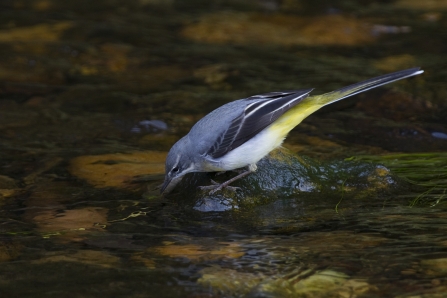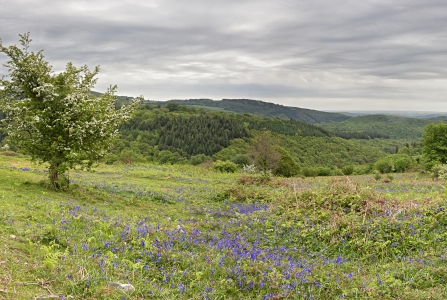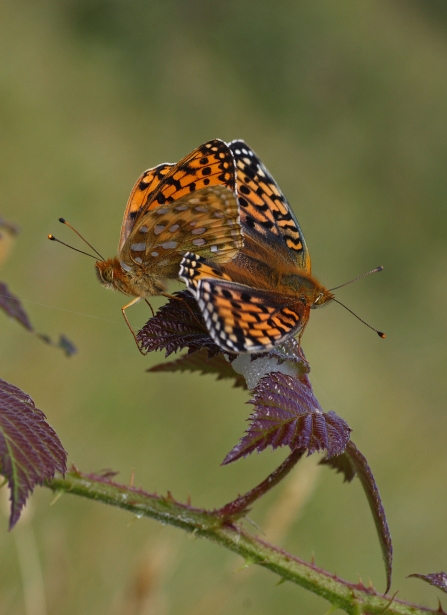
River Webbern. Photo, Dave Chamberlain
Know before you go
Dogs
When to visit
Opening times
Open at all timesBest time to visit
All year roundAbout the reserve
A reserve of two parts, Town Wood and Blackadon Down, featuring two of Dartmoor’s iconic habitats – steep wooded river valley and grazed bracken moor.
Ash dieback
The disease ash dieback is now widespread in the UK and is present at many of our nature reserves, so we carry out tree felling across our sites in winter months. For your own safety please observe temporary path diversions and closures.
Where possible we will leave affected ash trees in place to decay naturally as an important habitat for wildlife. We plan to only fell diseased ash trees which pose a threat to people or infrastructure. Before trees are felled, we will check whether any rare or protected wildlife is present. If it is, we will postpone or avoid felling these trees. No felling will take place during the bird nesting season.
DWT’s Saving Devon’s Treescapes project are working with communities, landowners and businesses to help make Devon's precious treescapes more resilient in the face of ash dieback. Find out how you can get involved here.
NOTICE: If you are visiting our reserves, please note that there have been instances of H5N1 Avian bird flu found in birds in Devon. There is very low risk to public health, but we do ask that if you come across any unusual or unexplained bird deaths on or near our reserves, please do not touch them and avoid allowing your dog to come into contact with dead birds. Please report them to Defra here or call 03459 335577 and also report your findings to DWT by email at contactus@devonwildlifetrust.org.
Habitat
Contact us
Environmental designation
Location map
How to get to Blackadon

Grey wagtail. Photo, Neil Bygrave
Of oaks and otters
29 hectares of classic Dartmoor wooded valley forms the greater part of the reserve, enclosing the fast flowing River Webbern. A tributary of the Dart, the rushing waters are studded by stream-smoothed boulders on which passing otters may leave their spraint, and where bobbing grey wagtails can often be seen.
From the Blackadon Bridge entrance, pick your own path along the steep valley sides, cloaked beneath sessile oak woodland, to find spring woodland flowers such as sanicle, woodruff and primrose among the fern and moss-clad rocky outcrops. Rarities include bastard balm, Tunbridge filmy fern and Graphina pauciloculata lichen.
The woods support important moss and lichen communities which are unique in Western Europe. Look out overhead for pied flycatcher, wood warbler and redstarts flitting through the tree canopy, and in winter for woodcock, which may erupt into flight from the ground before your feet.

Blackadon river view. Photo, David Chamberlain
Moor to be seen
On reaching the upper slopes, the woodland thins out through hazel and birch coppice to the 8 hectare moorland of Blackadon Down. Stands of bracken are interspersed with scattered low growing gorse, hawthorn and blackthorn scrub, on which linnets and yellowhammers may perch, and open glades of wild strawberry, tormentil and bugle.
Pathways through the bracken, kept open by grazing livestock, link back to the Leusdon entrance to the reserve. The mix of bracken cover and clearings, which sustains early flowering violets, is of crucial value to some particular rare species.

Dark green fritillary. Photo, Chris Root
Flying visitor
Several fritillary butterflies depend on this type of bracken moorland habitat, including pearl-bordered, small pearl-bordered and dark green fritillaries, each of which can be seen here, alongside the critically endangered high brown fritillary. This area of Dartmoor is a stronghold for this strong flying species; some individuals make use of the reserve in most years.
For the highest point, and a butterfly's eye view, of the site, Blackadon Tor rises above the moorland plateau of Blackadon Down. From the bench here one can see far across the treetops marking the winding course of the River Webburn, and over to Buckland church on the other side of the valley.
Devon Wildlife Trust's Blackadon nature reserve has been supported by Viridor Credits Environmental Company.
Combine a visit to Blackadon with a trip to our nearby Dart Valley nature reserve.




